Dynamics of Newtonian Liquids with Distinct Concentrations Due to Time-Varying Gravitational Acceleration and Triple Diffusive Convection: Weakly Non-Linear Stability of Heat and Mass Transfer
Abstract
:1. Introduction
- At different levels of amplitude of modulation, how does the Nusselt number proportional to heat transfer rates () change with time?
- How do decreasing Lewis number and Rayleigh number affect the Sherwood number proportional to mass transfer of solute 1 () varying with time?
- What is the effect of decreasing Prandtl number on the Nusselt number proportional to heat transfer rates (), Sherwood number proportional to mass transfer of solute 1 () and Sherwood number proportional to mass transfer of solute 2 ()?
2. Research Methodology
2.1. Formulation of the Governing Equations
2.2. Perturbed State and Dimensionless Variables
2.3. Weakly Non-Linear Stability Analysis
2.3.1. First-Order Solution
2.3.2. Second-Order Solution
2.3.3. Third-Order Solution
3. Analysis of Results and Discussion
3.1. Influence of the Amplitude of Modulation
3.2. Influence of the Lewis Number and Rayleigh Number
4. Concluding Remarks
- Decreasing the amplitude of modulation, Lewis number, Rayleigh number and frequency of modulation has no significant effect on the Nusselt number proportional to heat transfer rates (), Sherwood number proportional to mass transfer of solute 1 () and Sherwood number proportional to mass transfer of solute 2 () at the initial time.
- The critical value of the thermal Rayleigh number is independent of the amplitude of the modulation (). Thus, the onset of convection is not affected by the amplitude of the modulation.
- The crucial Rayleigh number rises in value in the presence of a third diffusive component. The third diffusive component is essential in delaying the onset of convection.
- For a small time, the amplitude of modulation increases the heat and mass transport rate and the mass transport rate is more significant than heat transport.
- The Prandtl number increases mass and heat transport for a minimal period and has a negligible effect on , and after a short time interval.
- The effect of two solute Rayleigh numbers and is to increase the mass and heat transport.
- The value of , and decreases on increasing the value of and .
Author Contributions
Funding
Data Availability Statement
Acknowledgments
Conflicts of Interest
Nomenclature
| Latin Symbols | |
| Amplitude of the stream function | |
| g | Accelaration due to gravity |
| Reference value of g | |
| p | Pressure |
| Velocity vector | |
| Thermal Rayleigh number, | |
| Rayleigh number for ith solute, | |
| T | Temperature |
| Prandtl number, | |
| Nusselt number | |
| Sherwood number | |
| t | Time |
| Greek Symbols | |
| Thermal expansion coefficient | |
| Concentration expansion coefficient for ith solute | |
| Thermal diffusivity | |
| solute diffusivity for ith solute | |
| rescaled time | |
| ratio of diffusivity | |
| Amplitude of modulation | |
| Perturbation/disturbance parameter | |
| Reference density | |
| Density of fluid | |
| k | Wave number |
| Dynamic viscosity | |
| Kinematic viscosity | |
| Frequency of modulation | |
| Stream function | |
| Subscript and Superscript | |
| b | Basic state |
| Perturbed state | |
| * | Dimensionless parameter |
References
- Turner, J.S.; Turner, J.S. Buoyancy Effects in Fluids; Cambridge University Press: Cambridge, UK, 1979; p. 251. [Google Scholar]
- Antar, B.N. Penetrative double-diffusive convection. Phys. Fluids 1987, 30, 322–330. [Google Scholar] [CrossRef]
- Gupta, V.K.; Kumar, A.; Singh, A.K. Analytical study of weakly non-linear mass transfer in rotating fluid layer under time-periodic concentration/gravity modulation. Int. J. Non-Linear Mech. 2017, 97, 22–29. [Google Scholar] [CrossRef]
- Bhadauria, B.S.; Hashim, I.; Siddheshwar, P.G. Effects of time-periodic thermal boundary conditions and internal heating on heat transport in a porous medium. Transp. Porous Media 2013, 97, 185–200. [Google Scholar] [CrossRef]
- Siddheshwar, P.G.; Bhadauria, B.S.; Srivastava, A. An analytical study of non-linear double-diffusive convection in a porous medium under temperature/gravity modulation. Transp. Porous Media 2012, 91, 585–604. [Google Scholar] [CrossRef]
- Straughan, B.; Tracey, J. Multi-component convection-diffusion with internal heating or cooling. Acta Mech. 1999, 133, 219–238. [Google Scholar] [CrossRef]
- Wollkind, D.J.; Manoranjan, V.S.; Zhang, L. Weakly Nonlinear Stability Analyses of Prototype Reaction-Diffusion Model Equations. SIAM Rev. 1994, 36, 176–214. [Google Scholar] [CrossRef]
- Rionero, S. Triple-diffusive convection in porous media. Acta Mech. 2013, 224, 447–458. [Google Scholar] [CrossRef]
- Rudraiah, N.; Vortmeyer, D. The influence of permeability and of a third diffusing component upon the onset of convection in a porous medium. Int. J. Heat Mass Transf. 1982, 25, 457–464. [Google Scholar] [CrossRef]
- Tracey, J. Original Article Multi-component convection-diffusion in a porous medium. Contin. Mech. Thermodyn. 1996, 8, 361–381. [Google Scholar] [CrossRef]
- Raghunatha, K.R.; Shivakumara, I.S.; Shankar, B.M. Weakly non-linear stability analysis of triple-diffusive convection in a Maxwell fluid saturated porous layer. Appl. Math. Mech. 2018, 39, 153–168. [Google Scholar] [CrossRef]
- Khan, Z.H.; Khan, W.A.; Sheremet, M.A. Enhancement of heat and mass transfer rates through various porous cavities for triple convective-diffusive free convection. Energy 2020, 201, 117702. [Google Scholar] [CrossRef]
- Shivakumara, I.S.; Kumar, S.N. Linear and weakly non-linear triple-diffusive convection in a couple stress fluid layer. Int. J. Heat Mass Transf. 2014, 68, 542–553. [Google Scholar] [CrossRef] [Green Version]
- Raghunatha, K.R.; Shivakumara, I.S.; Pallavi, G. Couple stress effects on the stability of three-component convection-diffusion in a porous layer. Heat Transf. 2021, 50, 3047–3064. [Google Scholar] [CrossRef]
- Stuart, J.T. On the non-linear mechanics of hydrodynamic stability. J. Fluid Mech. 1958, 4, 1–21. [Google Scholar] [CrossRef]
- Stokes, G.G. On the theory of oscillatory waves. Trans. Camb. Phil. Soc. 1847, 8, 411–455. [Google Scholar]
- Bohr, N. Determination of the surface-tension of water by the method of jet vibration. Philosophical Transactions of the Royal Society of London. Ser. A Contain. Pap. Math. Phys. Character 1909, 209, 281–317. [Google Scholar]
- Heisenberg, W. On the stability of laminar flow. In Scientific Review Papers, Talks and Books Wissenschaftliche Ubersichtsartikel; Vortrage und Bucher; Springer: Berlin/Heidelberg, Germany, 1984; pp. 471–475. [Google Scholar]
- Newell, A.C.; Whitehead, J.A. Finite bandwidth, finite amplitude convection. J. Fluid Mech. 1969, 38, 279–303. [Google Scholar] [CrossRef] [Green Version]
- Stewartson, K.; Stuart, J.T. A non-linear instability theory for a wave system in plane Poiseuille flow. J. Fluid Mech. 1971, 48, 529–545. [Google Scholar] [CrossRef]
- Collet, P.; Eckmann, J.P. The time dependent amplitude equation for the Swift-Hohenberg problem. Commun. Math. Phys. 1990, 132, 139–153. [Google Scholar] [CrossRef] [Green Version]
- Schneider, G. Global existence via Ginzburg–Landau formalism and pseudo-orbits of Ginzburg–Landau approximations. Commun. Math. Phys. 1994, 164, 157–179. [Google Scholar] [CrossRef] [Green Version]
- van Harten, A. On the validity of the Ginzburg–Landau equation. J. Nonlinear Sci. 1991, 1, 397–422. [Google Scholar] [CrossRef]
- Malashetty, M.S.; Swamy, M.S. Effect of gravity modulation on the onset of thermal convection in rotating fluid and porous layer. Phys. Fluids 2011, 23, 064108. [Google Scholar] [CrossRef]
- Chandrasekhar, S. Hydrodynamic and Hydromagnetic Stability; Oxford University Press: Oxford, UK; Dover Publications, Inc.: New York, NY, USA, 1961. [Google Scholar]
- Wadih, M.; Roux, B. Natural convection in a long vertical cylinder under gravity modulation. J. Fluid Mech. 1988, 193, 391–415. [Google Scholar] [CrossRef]
- Venezian, G. Effect of modulation on the onset of thermal convection. J. Fluid Mech. 1969, 35, 243–254. [Google Scholar] [CrossRef] [Green Version]
- Bhadauria, B.S. Double diffusive convection in a porous medium with modulated temperature on the boundaries. Transp. Porous Media 2007, 70, 191–211. [Google Scholar] [CrossRef]
- Animasaun, I.L.; Shah, N.A.; Wakif, A.; Mahanthesh, B.; Sivaraj, R.; Koriko, O.K. Ratio of Momentum Diffusivity to Thermal Diffusivity: Introduction, Meta-analysis and Scrutinization; Chapman and Hall/CRC: New York, NY, USA, 2022; ISBN-13: 978-1032108520. [Google Scholar] [CrossRef]
- Alessa, N.; Tamilvanan, K.; Balasubramanian, G.; Loganathan, K. Stability results of the functional equation deriving from quadratic function in random normed spaces. AIMS Math. 2021, 6, 2385–2397. [Google Scholar] [CrossRef]
- Tamilvanan, K.; Loganathan, K.; Revathi, N. HUR Stability Results of Mixed-Type Additive-Quadratic Functional Equation in Fuzzy b-Normed Spaces by Two Different Approaches. In Soft Computing Techniques in Engineering, Health, Mathematical and Social Sciences; CRC Press: Boca Raton, FL, USA, 2021; pp. 63–92. [Google Scholar]

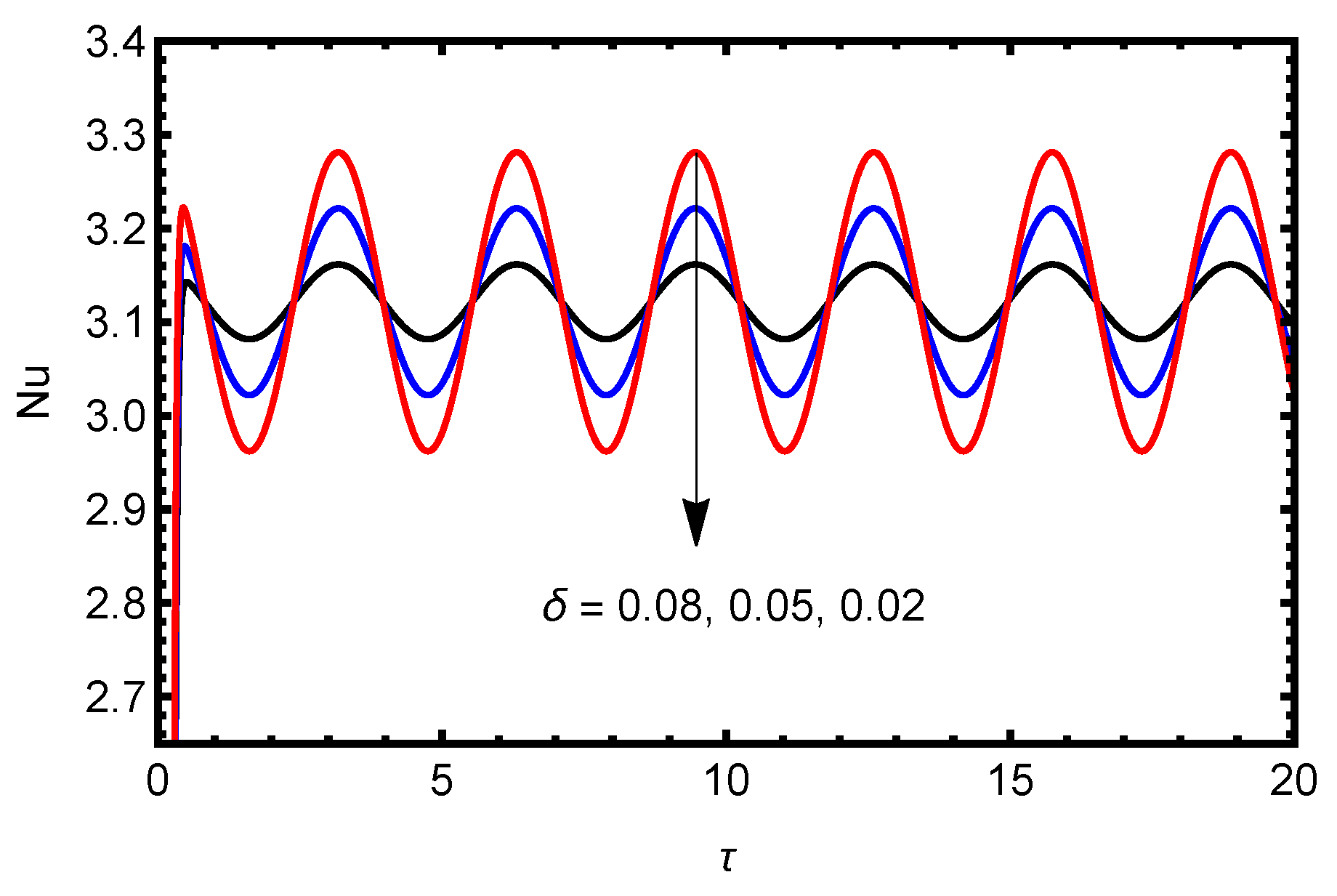
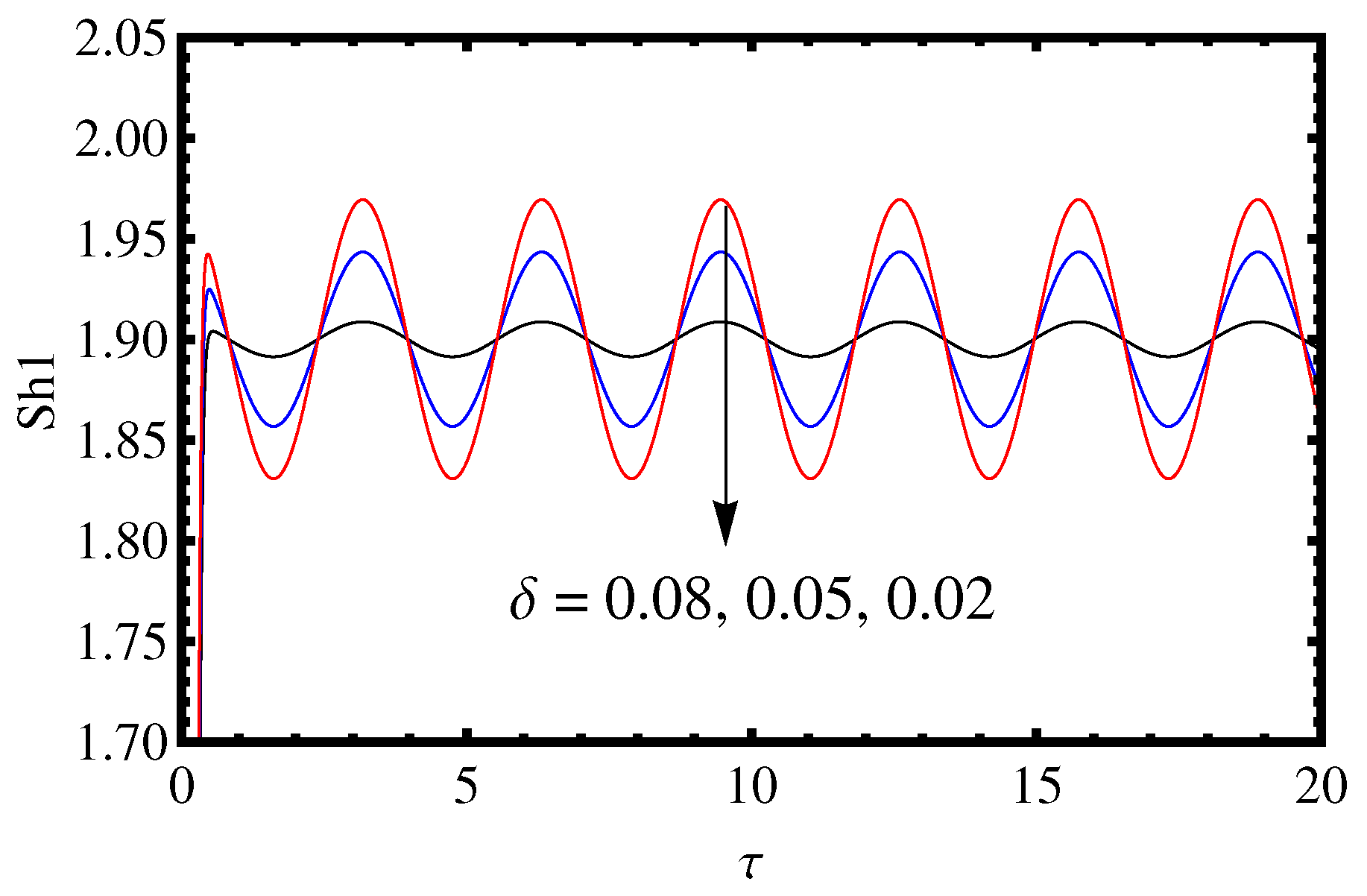
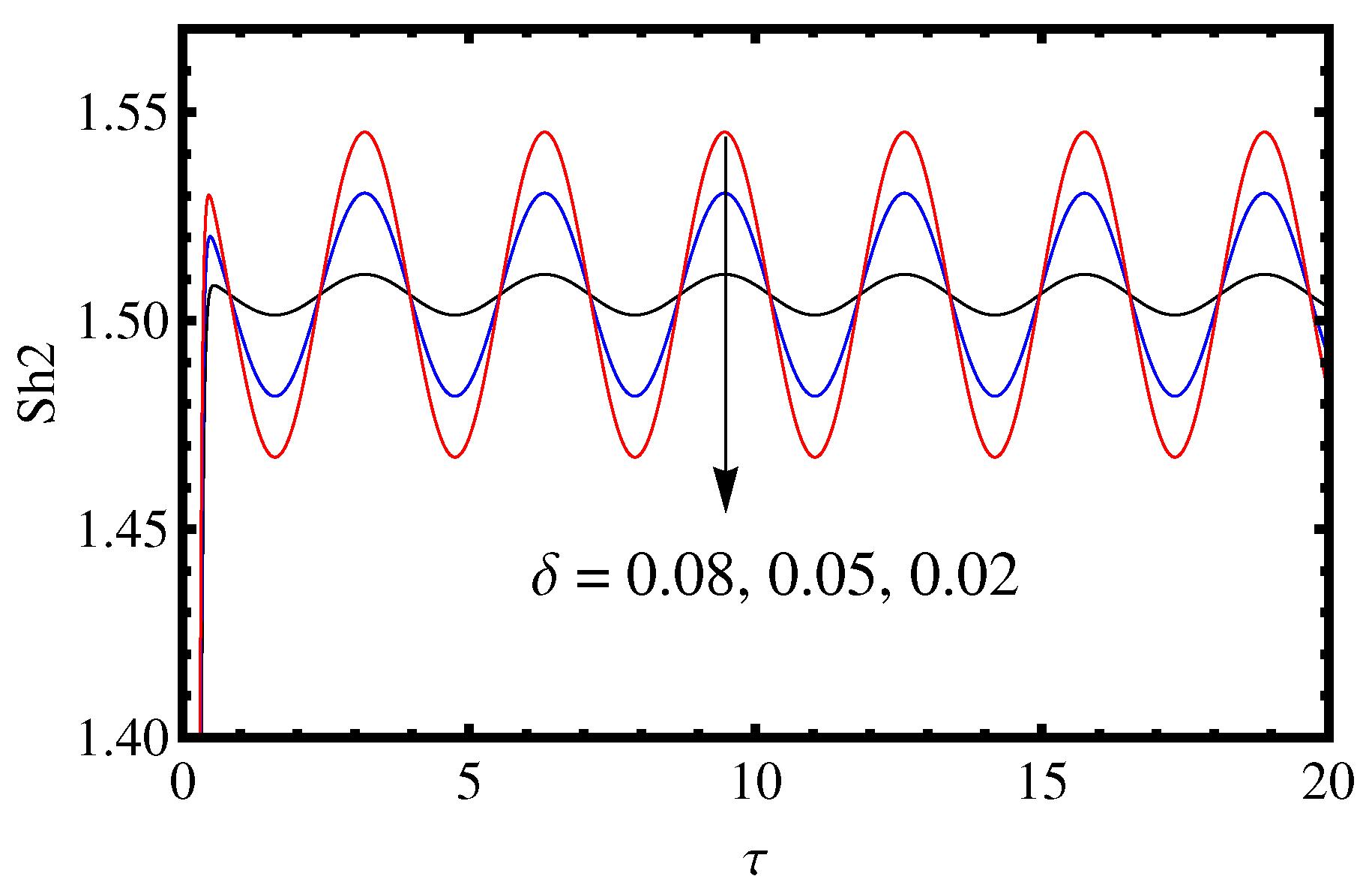

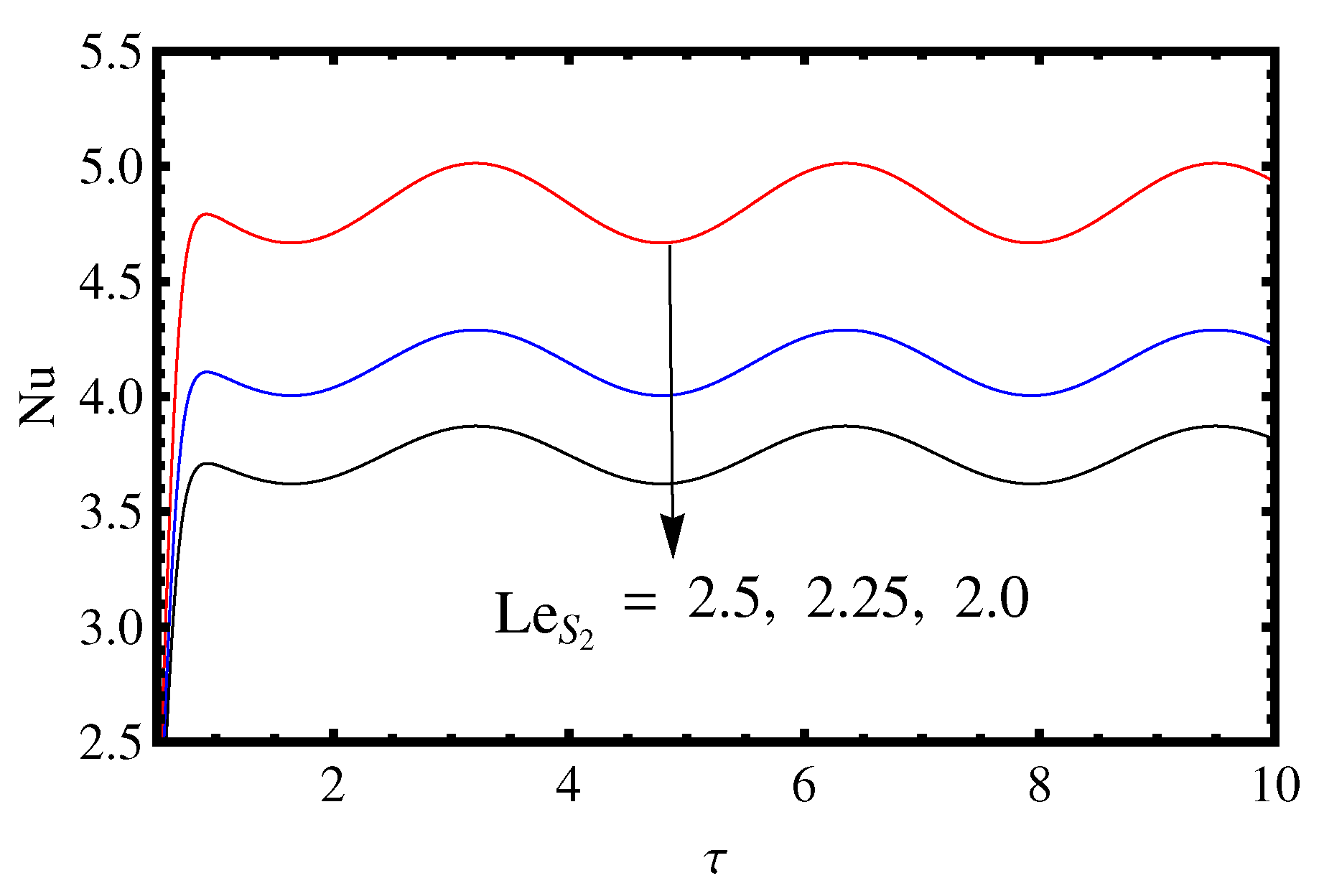

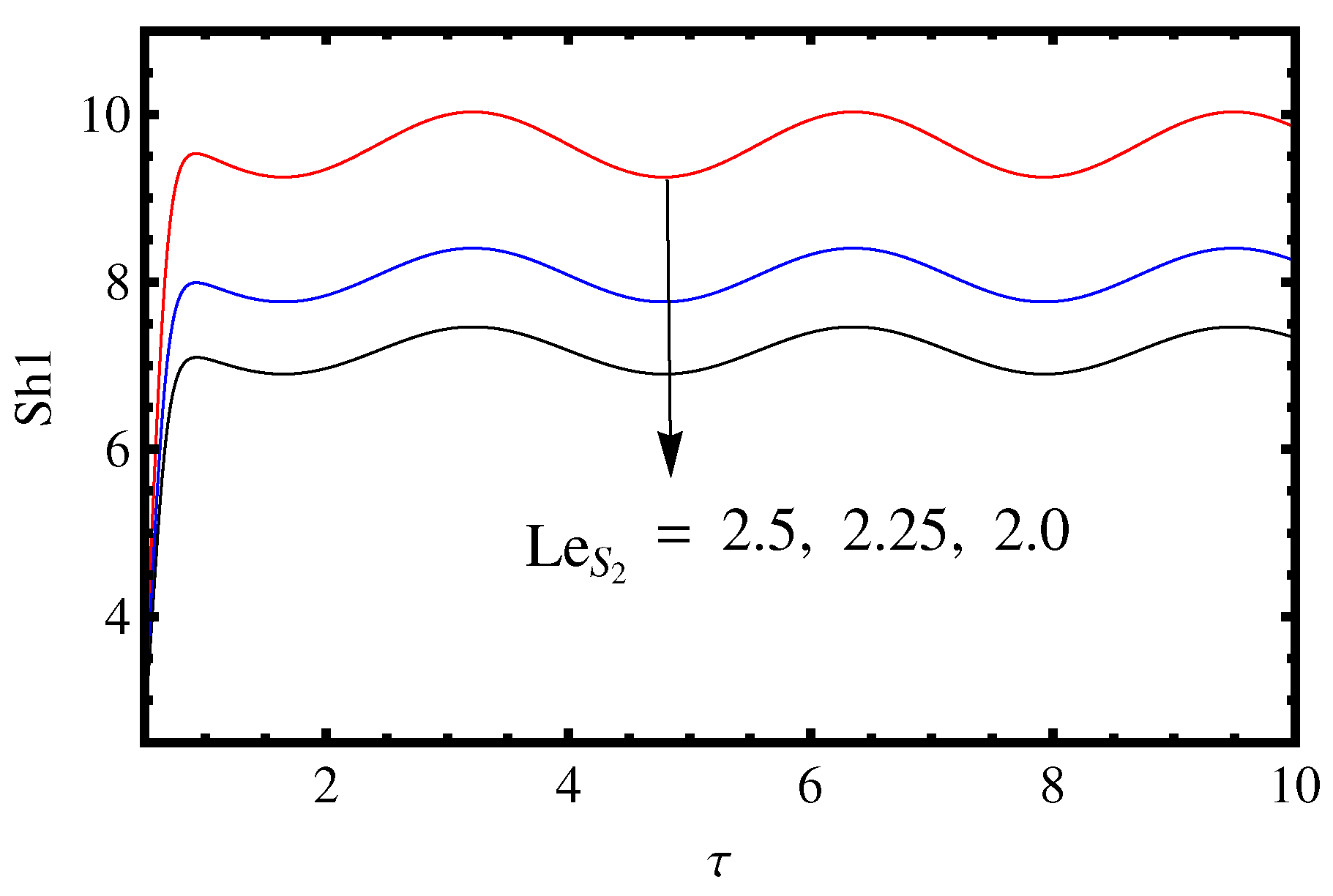

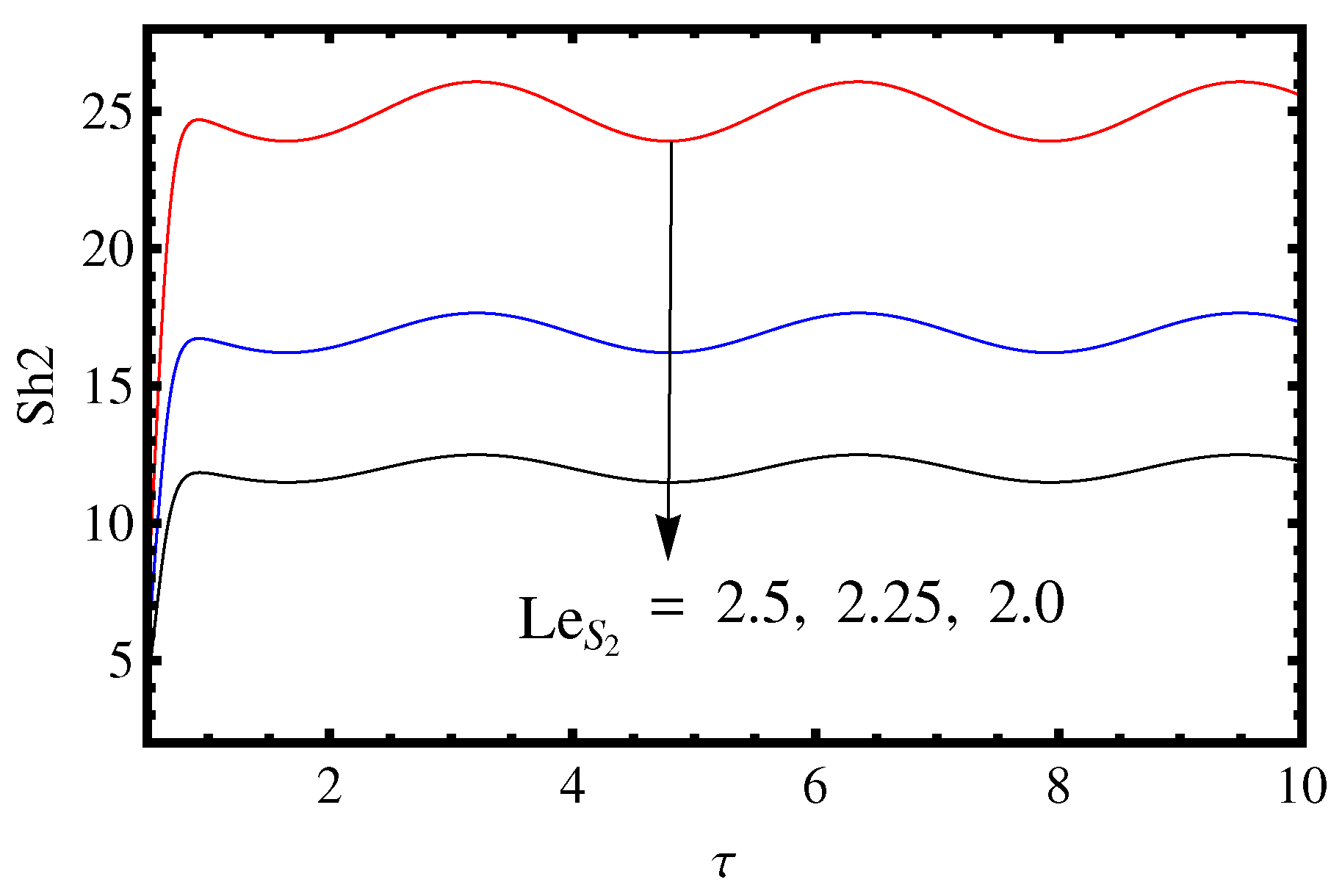
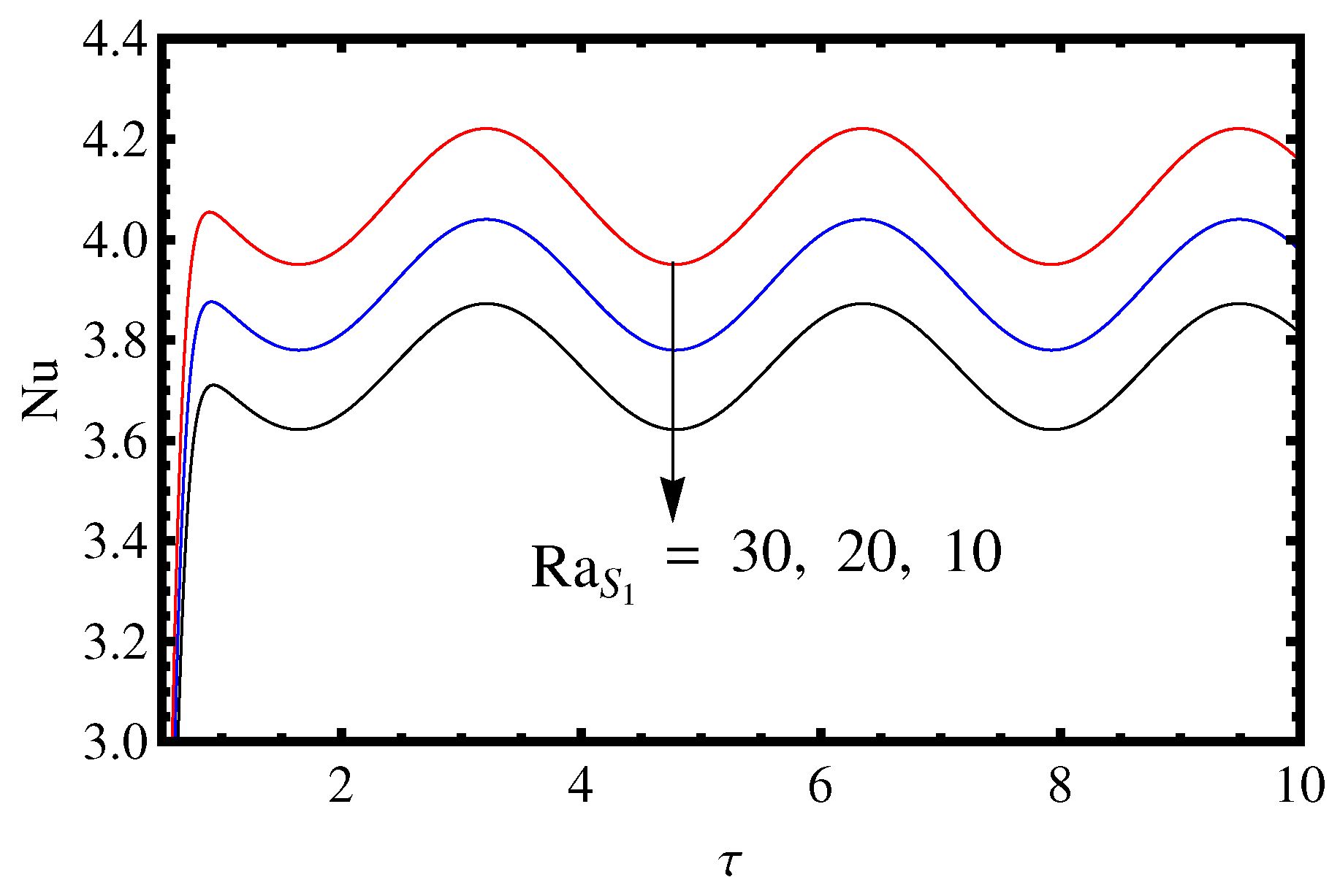
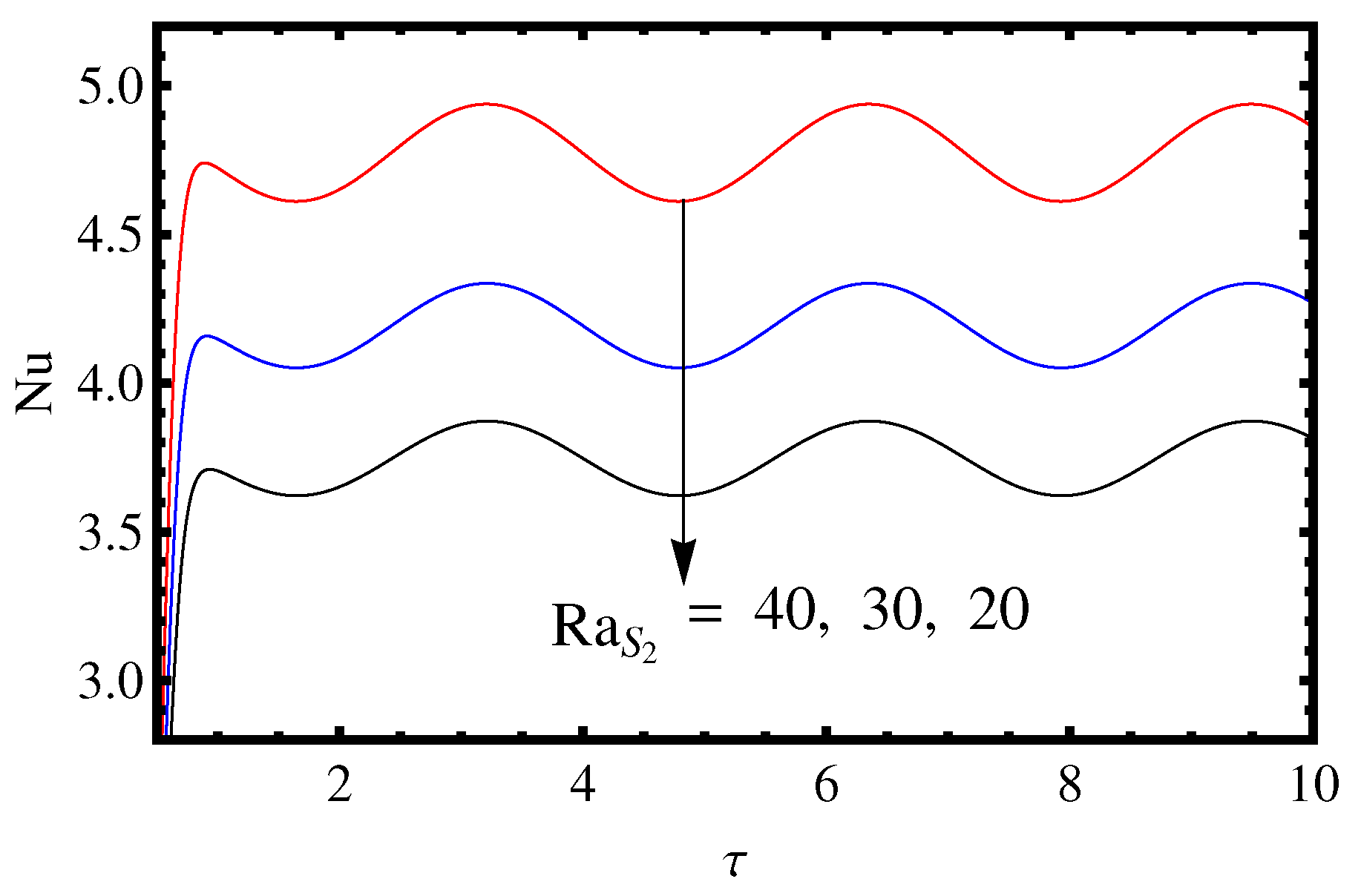
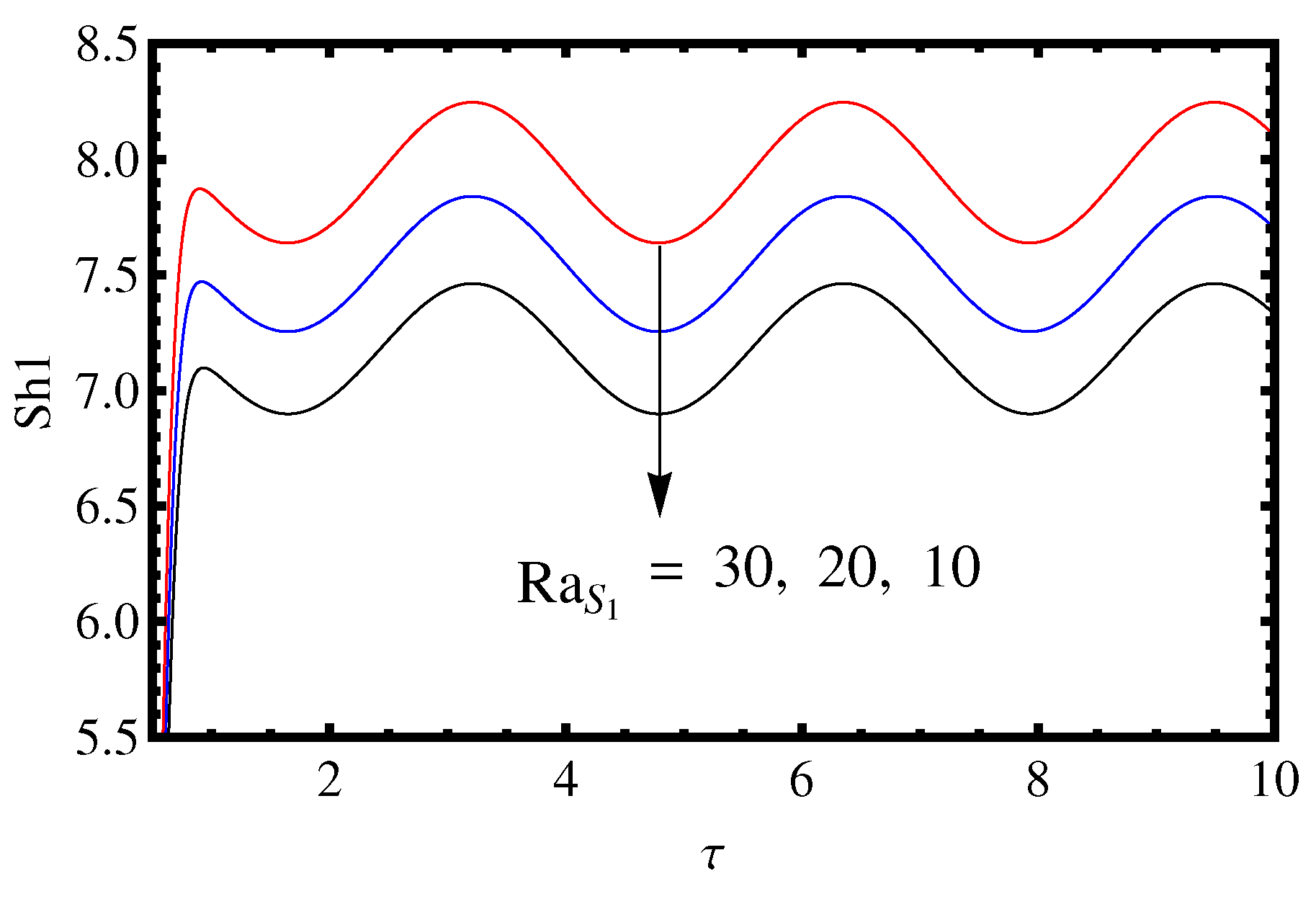
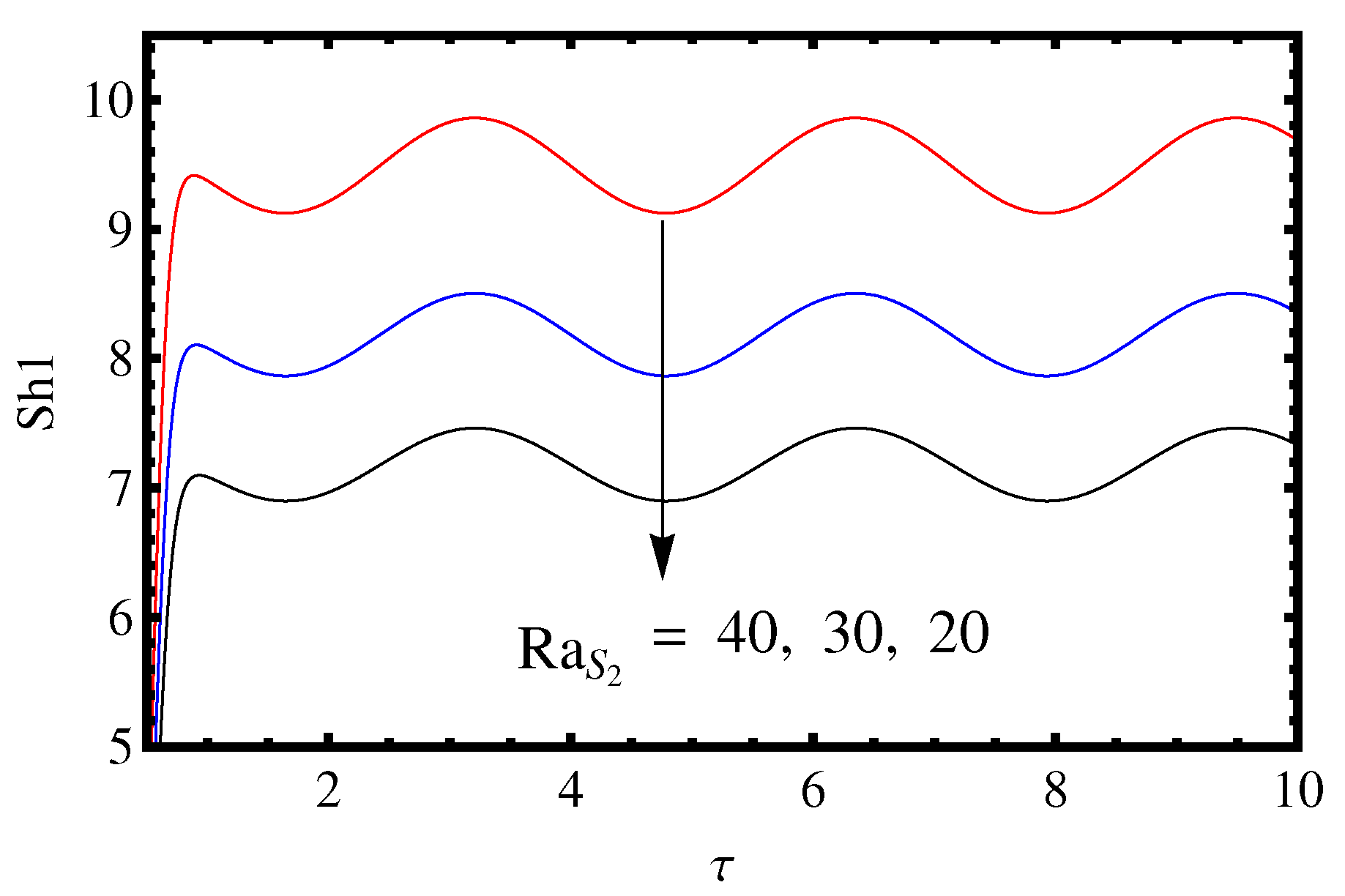
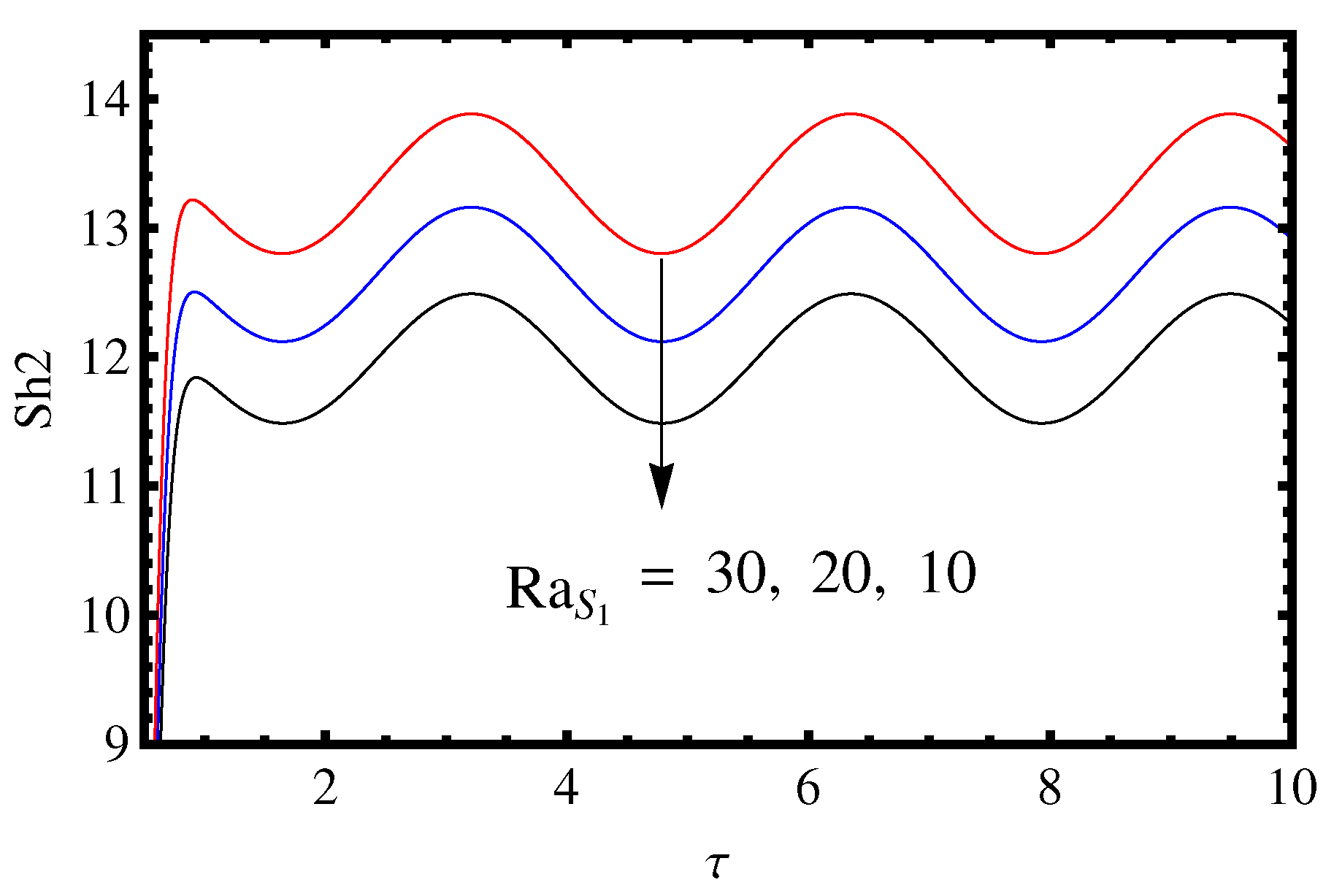

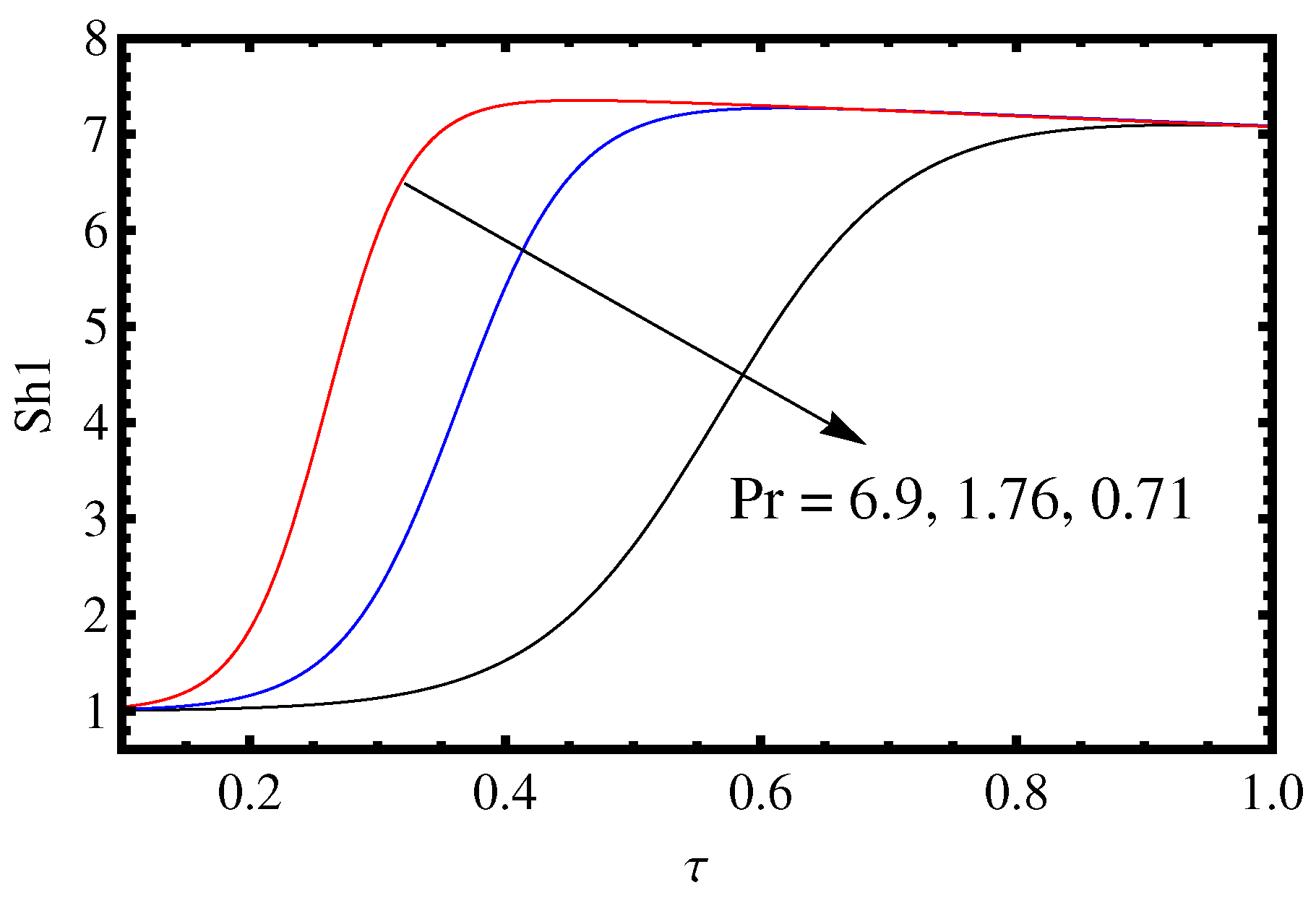

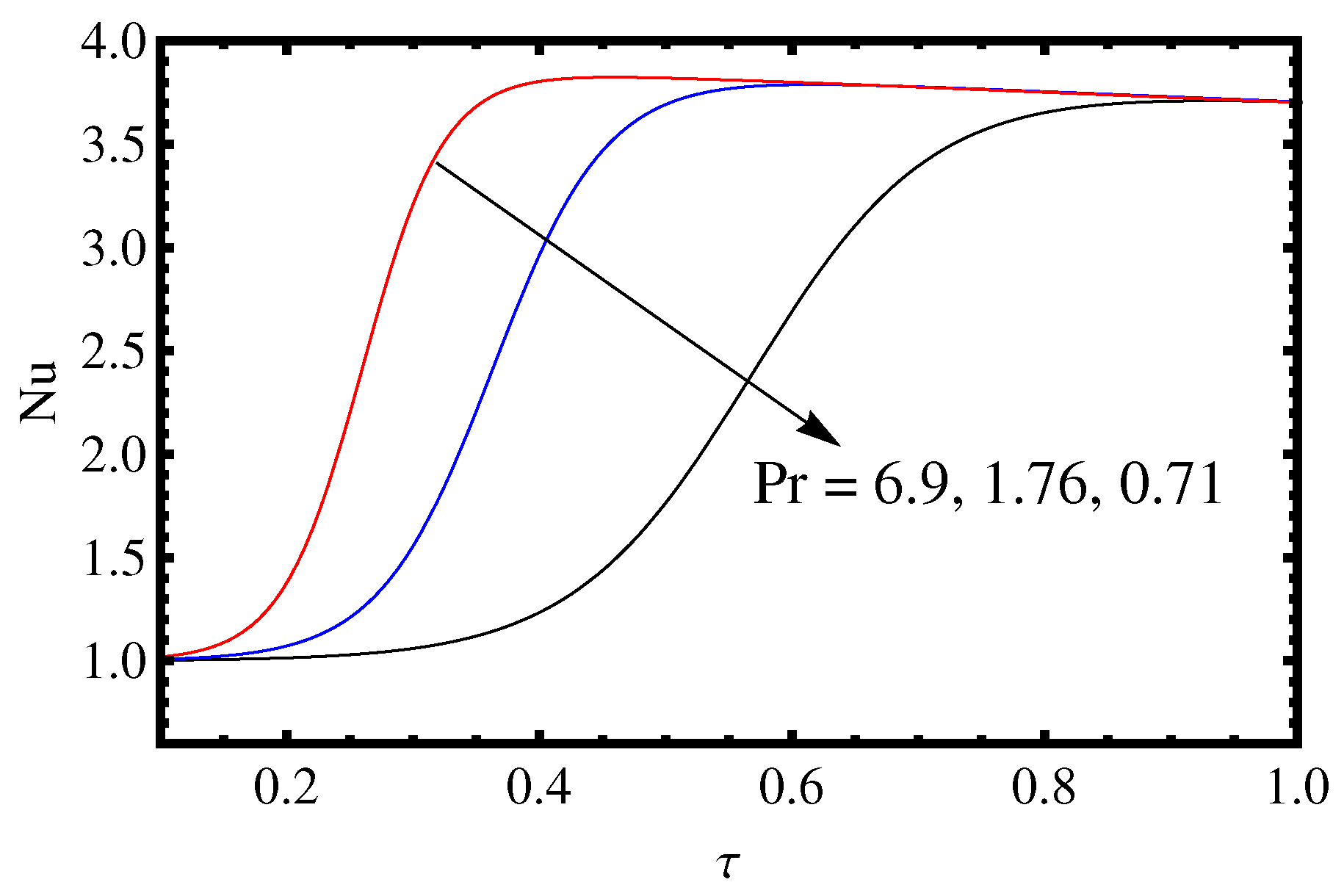
Disclaimer/Publisher’s Note: The statements, opinions and data contained in all publications are solely those of the individual author(s) and contributor(s) and not of MDPI and/or the editor(s). MDPI and/or the editor(s) disclaim responsibility for any injury to people or property resulting from any ideas, methods, instructions or products referred to in the content. |
© 2023 by the authors. Licensee MDPI, Basel, Switzerland. This article is an open access article distributed under the terms and conditions of the Creative Commons Attribution (CC BY) license (https://creativecommons.org/licenses/by/4.0/).
Share and Cite
Singh, P.; Gupta, V.K.; Animasaun, I.L.; Muhammad, T.; Al-Mdallal, Q.M. Dynamics of Newtonian Liquids with Distinct Concentrations Due to Time-Varying Gravitational Acceleration and Triple Diffusive Convection: Weakly Non-Linear Stability of Heat and Mass Transfer. Mathematics 2023, 11, 2907. https://doi.org/10.3390/math11132907
Singh P, Gupta VK, Animasaun IL, Muhammad T, Al-Mdallal QM. Dynamics of Newtonian Liquids with Distinct Concentrations Due to Time-Varying Gravitational Acceleration and Triple Diffusive Convection: Weakly Non-Linear Stability of Heat and Mass Transfer. Mathematics. 2023; 11(13):2907. https://doi.org/10.3390/math11132907
Chicago/Turabian StyleSingh, Pervinder, Vinod K. Gupta, Isaac Lare Animasaun, Taseer Muhammad, and Qasem M. Al-Mdallal. 2023. "Dynamics of Newtonian Liquids with Distinct Concentrations Due to Time-Varying Gravitational Acceleration and Triple Diffusive Convection: Weakly Non-Linear Stability of Heat and Mass Transfer" Mathematics 11, no. 13: 2907. https://doi.org/10.3390/math11132907







